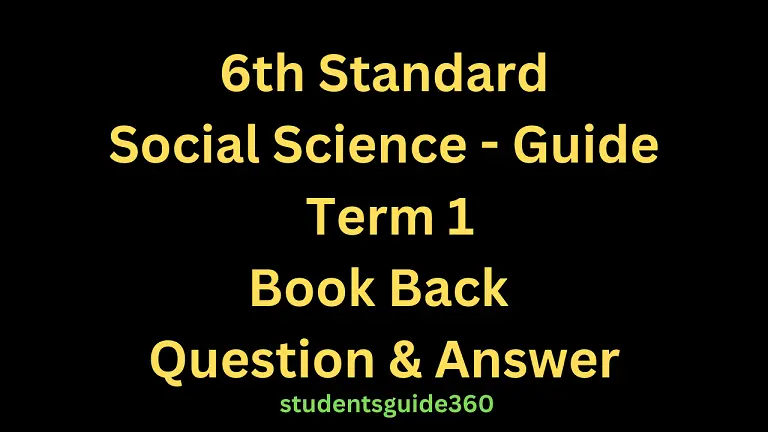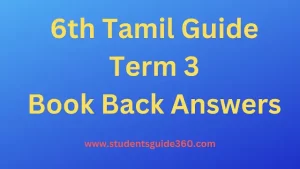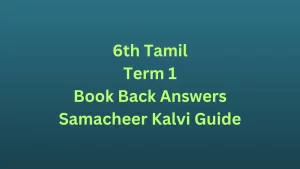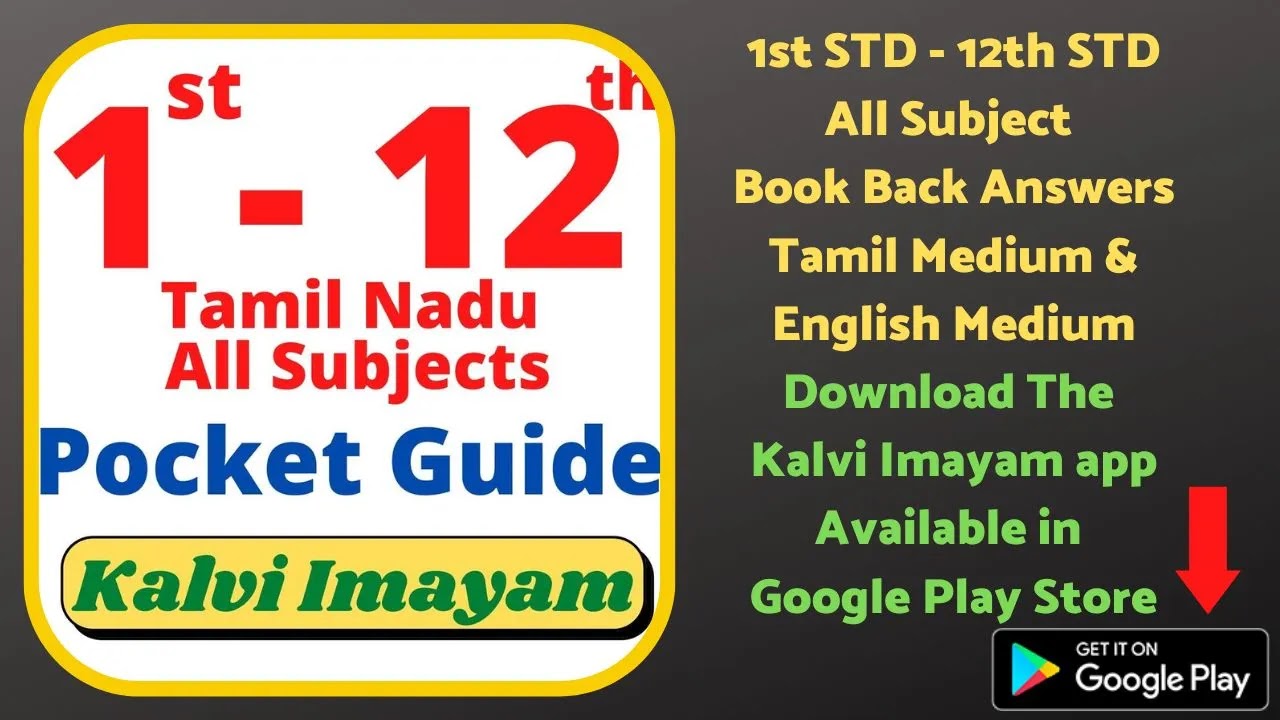6th Social Science Term 1 Civics Unit 1 Understanding Diversity
6th Standard Social Science Term 1 – Civics Guide Lesson 1 Understanding Diversity
6th Standard Social Science Term 1 Civics Unit 1 Understanding Diversity Book Back Question and answers English Medium download pdf. 6th All Subject Text Books download pdf. 6th Social Science Term 1 Guide. 6th All Subject Book Back Answers. 6th Social Science Samacheer kalvi guide.

6th Social Science Term 1 Civics Lesson 1 Understanding Diversity
I. Choose the correct answer
1. India consists of____ States and _____ Union territories.
- 27,9
- 29, 7
- 28,7
- 28,9
Ans : 29, 7
2. India is known as a
- Continent
- Sub continent
- Island
- None of these
Ans : Sub continent
3. Mawsynram, the land of highest rainfall is located in
- Manipur
- Sikkim
- Nagaland
- Meghalaya
Ans : Meghalaya
4. Which one of the following religion is not practised in India
- Sikhism
- Islam
- Zoarastrianism
- Confucianism
Ans : Confucianism
5. Recognised official languages of India, as per VIIIth Schedule of Indian Constitution
- 25
- 23
- 22
- 26
Ans : 22
6. Onam festival celebrated in
- Kerala
- Tamil Nadu
- Punjab
- Karnataka
Ans : Kerala
7. Mohiniyattam is a classical dance of
- Kerala
- Tamil Nadu
- Manipur
- Karnataka
Ans : Kerala
8. ‘Discovery of India’ – a book was written by
- Rajaji
- O.C
- Nethaji
- Jawaharlal Nehru
Ans : Jawaharlal Nehru
9. The phrase ‘ Unity in Diversity’ was coined by
- Jawaharlal Nehru
- Ambedkar
- Mahathma Gandhi
- Rajaji
Ans : Jawaharlal Nehru
10. V.A. Smith called India as _________
- Great Democracy
- Unique land of diversities
- Ethnological museum
- Secular nation
Ans : Ethnological museum
II. Fill in the blanks.
- Geographical features and climatic conditions determine the __________ activities of a
region.Ans : economic
- Jaisalmer, the land of lowest rainfall is located in __________Ans : Rajasthan
- Tamil was declared as classical language in the year __________Ans : 2004
- Bihu festival is celebrated in __________Ans : Assam
III. Match the following:
- Negroids – Religion
- Coastal areas – India
- Zoroastrianism – Fishery
- Unity in diversity – Indian race
Ans : 1 – D, 2 – C, 3 – A, 4 – B
IV. Answer the following questions:
1. Define diversity.
- In India, People speak different languages, eat different kinds of food, celebrate their own festivals. Diversity means a range of different people or things.
2. What are the types of diversity?
- Land forms and lifestyle diversity
- Social diversity
- Religious diversity
- Linguistic diversity
- Cultural diversity
3. Why is India called a sub continent?
- A continent is a very large area of land with various physical features such as mountains, Plateaus, Plains, Rivers and seas and various, types of weather.
- India has all of them. So India is known as a sub-continent.
4. Write the names of three major festivals celebrated in India.
- Pongal, Deepavali – Hindus
- Miladi Nabi, Ramjan – Muslims
- Christmas, Easter – Christians
5. List out some of the classical dances of India.
- Bharatanatyam
- Kathakali
- Yakshagana
- Kuchi pudi
- Odissi
- Manipuri
- Sattriya
6. Why is India called the land of unity in diversity?
- In India, people who lived in different parts of the country differ in their ways of life.
- These differences make us unique as Indians.
- We come from different backgrounds belong to different cultures, worship different Gods in different ways. Yet we live together. This is known us unity in diversity.
V. Answer the following in detail:
1. Explain: Linguistic diversity and cultural diversity.
Linguistic Diversity
- According to census of India 2001, India has 122 major languages and 1599 other languages.
- Four major Indian language families are Indo-Aryan, Dravidian, Austroasiatic and Sino Tibetian. Tamil is the oldest Dravidian language.
- Historically, the Portuguese, the Dutch, the British, the Danish and the French came to India for trade and their occupation of India or some parts of it has left behind a certain impact upon the culture and language of the people.
- In due course, English has emerged as an important language and a medium of instruction in schools and colleges.
Cultural Diversity
- The term ‘culture’ refers to customs and practices of people, their language, their dress code, cuisine, religion, social habits, music, art and architecture.
- The culture of a group of people is reflected in their social behaviour and interactions.
- The group identity fostered by social patterns is unique to a group.
- It develops as a part of culture and tradition of a community.
2. “India is a land of diversity, yet we are all united”. Discuss.
- Diversity is visible in every aspect of life in India.
- Even then, we are united by the spirit of patriotism.
- Symbols such as the National Flag and National Anthem remind us of our great nation and the need to stay united.
- We come together when we celebrate Independence Day, Republic Day and Gandhi Jayanthi every year.
- India has a multi-cultural society.
- India evolved as a single nation through common beliefs, customs and cultural practices.
- The freedom struggle and the drafting of our Constitution stands as ample evidence to the spirit of unity of India.




